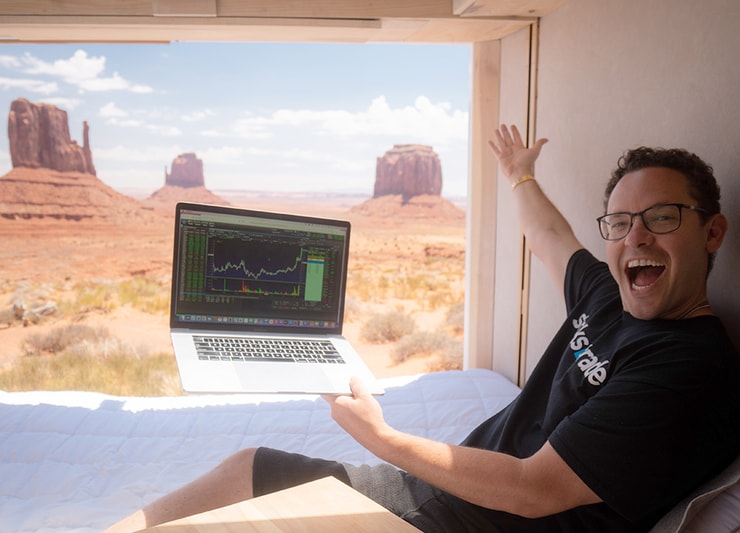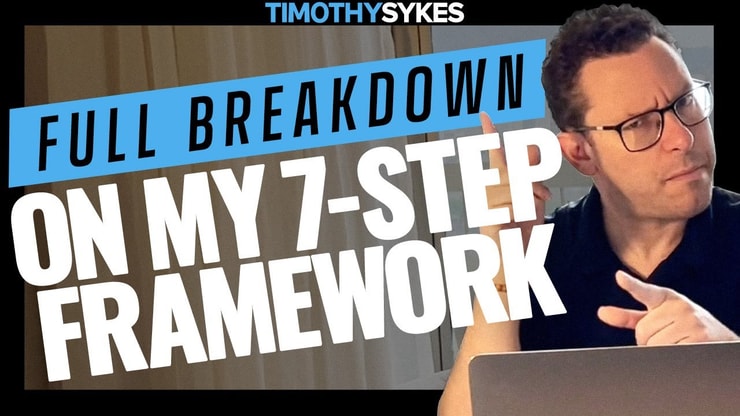If you exclude the Magnificent Seven (Apple, Amazon, Alphabet, NVIDIA, Meta, Microsoft and Tesla) the S&P 500 is barely up this year…
However, that doesn’t mean there haven’t been plenty of opportunities…especially lately.
Between myself and XGPT, we’ve picked the single biggest winner in the market three out of the last four days!
BDRX went from $2.51 to a high of $8.81 over the weekend…
RDHL which went from $1.03 to a high of $4.10 in two days…
MINM which went from $0.79 to $10.28 in one day...
I’ve been getting tons of messages from students who have been nailing these trades.
Now, if you’re someone who is seeing these stocks pop off, but are unsure how to take advantage of them…I’ll walk you through why we’re seeing them and how to take action.
Table of Contents
In A Traders Market You Must Be Hyper Focused

2025 Millionaire Media, LLCTake away the Magnificent Seven and the market has barely budged this year.
Which means if you are trying to make money from trading you’ve got to be intentional.
In other words, you’ve got to constantly look around and ask yourself: What’s working in this market?
And over the last few months…nothing has worked better than trading short squeezes.
Take for example the ticker symbol MINM, which went from $0.79 to $10.28 in one day!
I got into this trade in the pre-market on a partial fill, buying 1,750 shares at $5.98 and closing them out at $6.81.
I spent approximately $10,465 in capital, and made back $1,452 in profits.
Now, this was a scary trade for me because the stock was already up so much…
But thanks to VVOS the day before, I thought there was a chance the short squeeze could continue.
VVOS opened at $11.93 and went to a high of $48.79 on Wednesday.
And when a stock like VVOS catches fire…traders are on the hunt for the next one.
So why are we seeing so many short squeezes?
Why Short Squeezes are Proliferating

2025 Millionaire Media, LLCOverconfidence of Short Sellers: Many short sellers enter the market with a belief that they have a superior understanding of stock valuations and market trends.
This overconfidence often leads them to overlook key risk factors, setting the stage for a short squeeze.
For example, when VVOS announced it received the first ever FDA 510(k) clearance for oral device treatment of severe obstructive sleep apnea, short sellers were quick to dismiss the news, focusing solely on the company’s need to raise capital.
However, they underestimated the market’s reaction to positive news, and the supply and demand dynamics,
Timing Mishaps: Trading isn’t just about having the right idea; it’s about having the right timing. Short sellers often lack this crucial element.
They might hold a strong thesis on a stock’s potential decline, but if they’re too early in their predictions, the stock can soar to new heights before eventually dropping, causing significant losses in the meantime.
Poor Risk Management: Short selling requires a robust risk management strategy, something many short sellers lack. They often take positions based on conviction rather than a balanced assessment of potential risks and rewards. This lack of risk management can result in catastrophic losses, especially in a market ripe for short squeezes.
More Breaking News
- Sonnet BioTherapeutics: Analyzing the Recent Surge
- Quantum-Si Announces $50M Stock Offering Amid Financial Shifts
- EHGO’s Unexpected Surge: What to Know
Understanding the Short Squeeze Environment

2025 Millionaire Media, LLCThe recent market scenario has been particularly conducive to short squeezes. Stocks like VVOS, MINM, and RDHL have all seen significant surges due to short squeezes. These movements are often driven by a combination of factors:
Market Sentiment: The general sentiment in the market can dramatically affect stock prices. When traders collectively begin to focus on certain stocks, especially those heavily shorted, it creates a ripe environment for a squeeze.
Catalysts: Events like positive earnings reports, favorable regulatory updates, or even influential social media posts can act as catalysts. These events often trigger rapid buying activity, catching short sellers off guard.
Market Dynamics: The current market has shown a tendency for rapid shifts. Stocks that were once easy shorts are now experiencing brutal short squeezes. This inverse market behavior demands a keen eye on trends and adaptability from traders.
Taking Profits Early: In a market prone to short squeezes, it’s vital to take profits before they evaporate. This approach involves a careful balance of being opportunistic yet cautious.
Avoiding Overnight Holds: The unpredictability of the current market makes holding stocks overnight a risky strategy, especially for companies with weaker fundamentals.
Staying Informed on Trends: Keeping abreast of market trends and understanding the psychological drivers behind stock movements is crucial. This knowledge helps in anticipating market shifts and making informed trading decisions.
To better grasp these concepts make sure you study up on the 7 stock framework:
AI Can Help You Trade Short Squeezes More Efficiently
Spotting short squeezes isn’t incredibly difficult.
But developing a strategy and a game plan for trading them can be.
However, with the power of AI, specifically, XGPT, it has the potential to lead you to making better trading decisions.
Earlier this week it spotted a massive opportunity in RDHL…which went $1.03 to a high of $4.10 in two days.
As well as countless others…including CYTO yesterday which was up nearly 30%
If you would like to learn how to utilize AI in your trading to make faster, more informed, and potentially more profitable trades…
===> Click here to learn more about XGT
🚨 Unleash Your Trading Potential in Today’s Volatile Market! 🚨

2025 Millionaire Media, LLCIf you’re dazzled by the recent jaw-dropping spikes in stocks like MINM, VVOS, and RDHL, and wondering how to spot and capitalize on these opportunities, then you can’t miss our next live training session.
📈 The market is teeming with unpredictable short squeezes and dramatic shifts. These are not ordinary times, and conventional trading strategies might not cut it.
👀 We’re delving deep into the mechanics of short squeezes, revealing why stocks like VVOS soared from $11.93 to a whopping $48.79 and how MINM skyrocketed from $0.79 to an astonishing $10.28.
We’re unpacking everything – from overconfident short sellers to market dynamics that turn “easy shorts” into brutal squeezes.
🔥 Join our live session to learn:
- How to identify potential short squeeze scenarios.
- The art of taking profits before they disappear.
- Why avoiding overnight holds is crucial in this market.
- How to stay ahead by understanding market trends and sentiments.
💡 Whether you’re a seasoned trader or just starting, these insights are vital for anyone looking to thrive in today’s market.
🚀 Don’t just watch from the sidelines as others make their move. Learn to navigate these turbulent market waters with confidence and strategy.
Your Trading GPS in This Uncharted Territory is Waiting.













Leave a reply